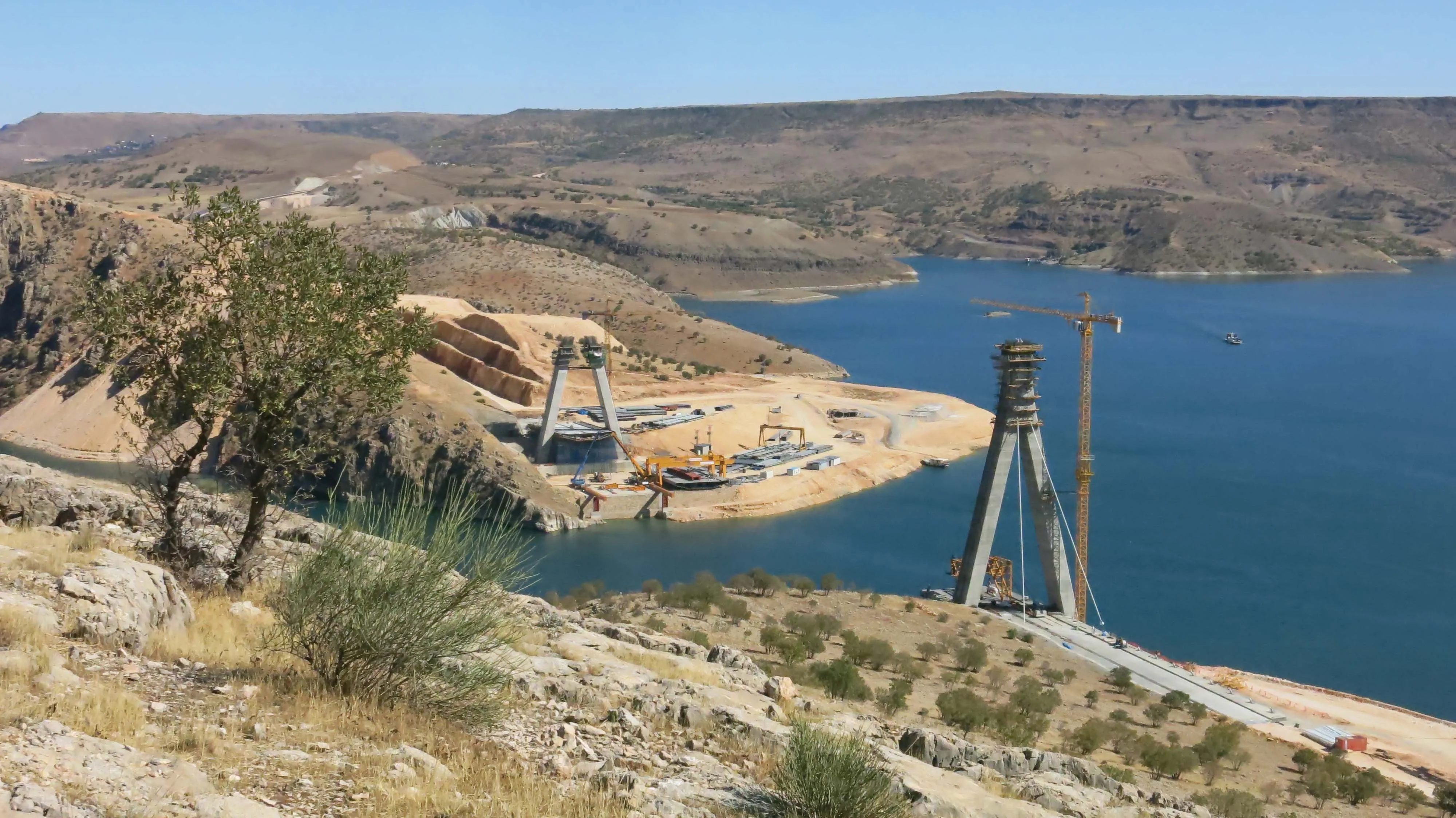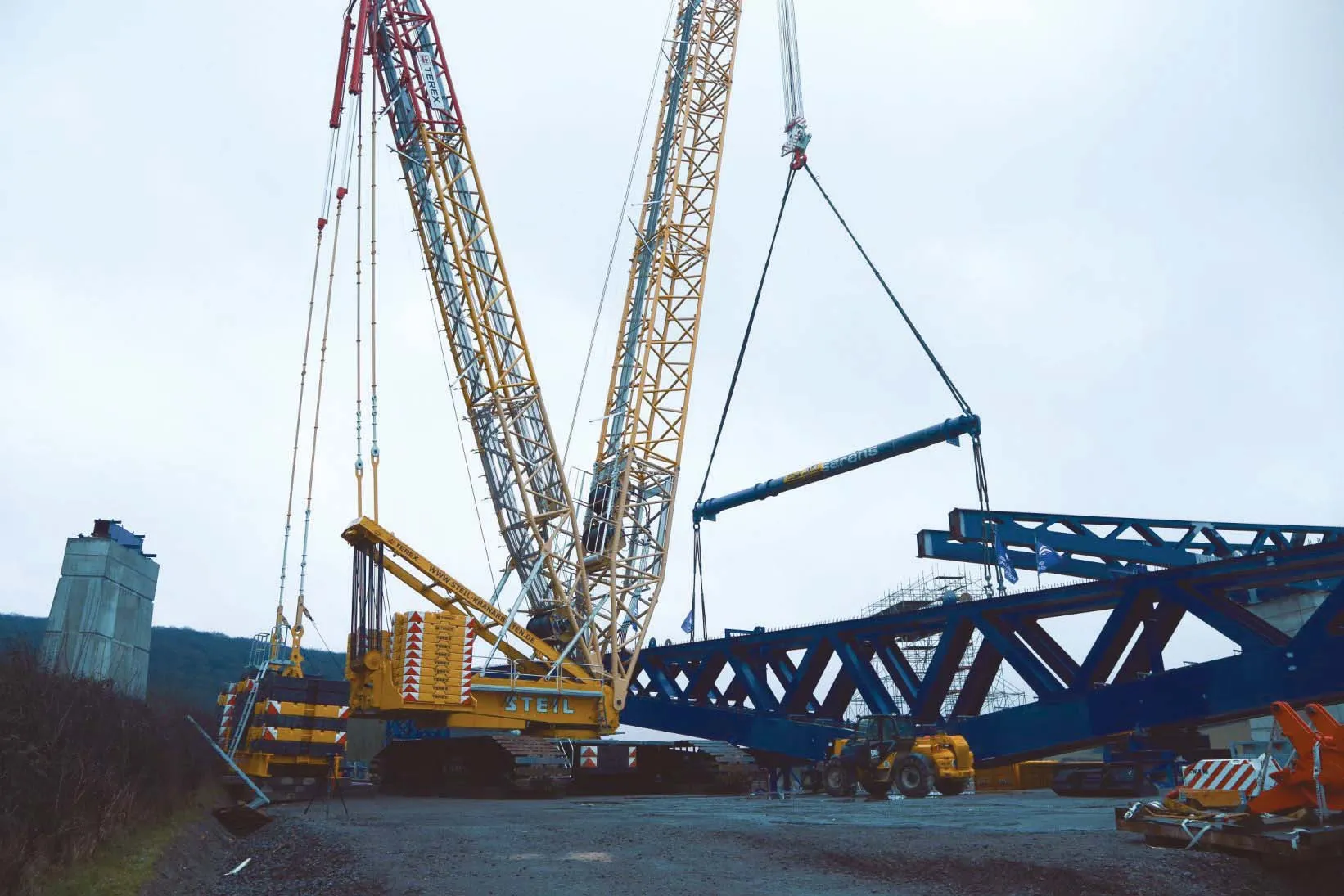Work is underway on a new bridge structure in Turkey, with tower cranes playing a key role in the project The two Potain tower cranes are being used to build a 610m long cable-stayed bridge in the south-east of the country. The two cranes are MC235B models and are working 10 hours/day on the project, which is taking 30 months. The new bridge will provide an important connection across the Ataturk Dam Reservoir on the Euphrates River.
March 28, 2014
Read time: 2 mins

The two 5916 Potain tower cranes are being used to build a 610m long cable-stayed bridge in the south-east of the country. The two cranes are MC235B models and are working 10 hours/day on the project, which is taking 30 months. The new bridge will provide an important connection across the Ataturk Dam Reservoir on the Euphrates River.
The 10tonne capacity MC235Bs were supplied to the main contactor,4143 Gulsan, by Potain’s Turkish dealer, Tekno Vinç, the largest tower crane operator in the country. The first Potain MC 235 B was erected at the Nissibi Bridge job site in September 2012, while the second joined in January 2013. Both will be dismantled by July 2014, ahead of the bridge’s opening later this year.
The top-slewing tower cranes are being used to lift general building materials used in traditional cable-stayed bridge construction, such as formwork and steel structures. As construction progresses, the cranes will lift large sections of carrier cables weighing up to 10tonnes.
The two Potain cranes are working at heights of 101m and 104m, and both are rigged with 45m jibs. The cranes are anchored to the bridge’s 96m tall pylons on each riverbank.
The cranes were transported to the job site from their base near Istanbul, more than 1,300km away. Once on site, a ferry was used to transport one crane to the other side of the river.
When it is complete, the Nissibi Bridge will be 24.5m wide and Span 400m across the Euphrates River. Work on the project commenced in July 2012. Established in 1990, Tekno Vinç operates a fleet of more than 100 Potain tower cranes, which it deploys at projects throughout Turkey, while Gulsan is a leading Turkish construction company based in Ankara.
The 10tonne capacity MC235Bs were supplied to the main contactor,
The top-slewing tower cranes are being used to lift general building materials used in traditional cable-stayed bridge construction, such as formwork and steel structures. As construction progresses, the cranes will lift large sections of carrier cables weighing up to 10tonnes.
The two Potain cranes are working at heights of 101m and 104m, and both are rigged with 45m jibs. The cranes are anchored to the bridge’s 96m tall pylons on each riverbank.
The cranes were transported to the job site from their base near Istanbul, more than 1,300km away. Once on site, a ferry was used to transport one crane to the other side of the river.
When it is complete, the Nissibi Bridge will be 24.5m wide and Span 400m across the Euphrates River. Work on the project commenced in July 2012. Established in 1990, Tekno Vinç operates a fleet of more than 100 Potain tower cranes, which it deploys at projects throughout Turkey, while Gulsan is a leading Turkish construction company based in Ankara.








